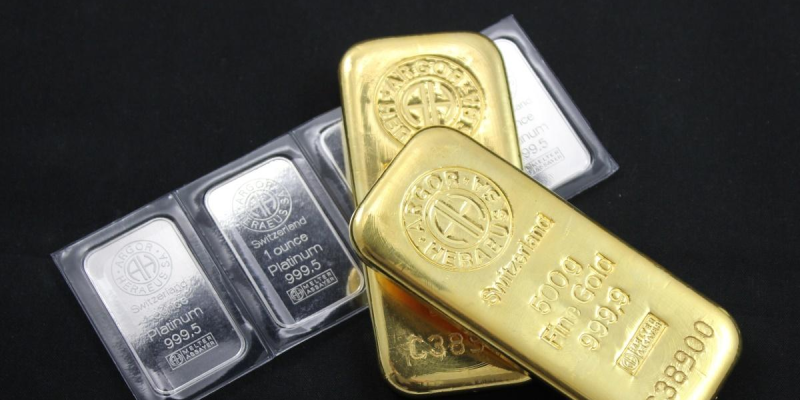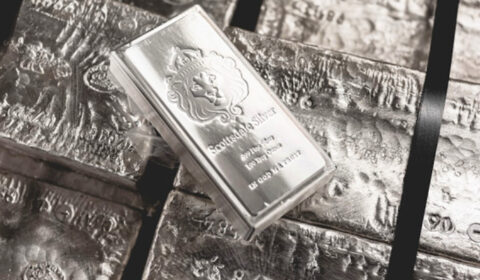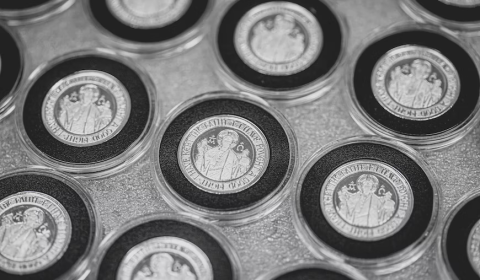The Profit Potential in Platinum and Gold

The following article is created by Orion Metal Exchange for the benefit of our investors and perspective investors alike. We seek to provide relevant content concerning precious metals and the impact caused by the economy and geopolitical trends that will most likely place impact on your financial future. If you are interested in learning about precious metal investing, call 1-800-559-0088, for a FREE investor kit.
Gold and platinum are both considered precious metals. However, platinum is significantly rarer than gold. Platinum is considered the rarest of all precious metals. Every year, a total of 3200 tons in gold is produced in countries around the world, while platinum mainly comes from Russia and South Africa and its production is limited to 250 tons a year.
Aside from differing in rarity and production, gold and platinum also differ in color, weight, density and uses. Gold is considered by many as the ultimate currency and the number one combatant against inflation. Platinum, however, is used in many industrial and environmental applications. It is regarded as the finest among all jewelry metals. More than 20% of all consumer goods are made using platinum or contain platinum. If global platinum mining were to end today, above-ground reserves would last less than one year. In contrast, global gold above-ground reserves could last nearly a quarter of a century.
Currently, the approximate cost to mine gold is $1050 per ounce and the cost to mine platinum per ounce is approximately $1150.
Supply and Demand
One factor at play in the world’s precious metals market is supply and demand. The two are inversely related in this case, meaning when supply decreases, the value increases with continued demand.
As previously mentioned, gold is produced in many countries around the world. In addition, its mining is an easy and less costly process than platinum. Around three-quarters of global platinum supply comes from South Africa and any negative fluctuations in the country’s social and economic landscape has a significant impact on the supply of platinum. Moreover, platinum is found underground, and its extraction requires specialized tools and equipment that are extremely expensive and can only be afforded by big companies. Gold’s demand is due to its use in jewelry, investment diversification, and technology applications. Platinum’s demand is due to its use in jewelry, healthcare, automobiles, and fuel cell technology.
Trevor Raymond, CEO of the WPIC, recently stated, “Platinum demand is bolstered by stricter emissions legislation, increased hybrid vehicles that contain an internal combustion engine, and growth in the substitution of platinum for palladium,” and this year will also witness the allocation and deployment of over $300 billion (about $920 per person in the US) in tax incentives and subsidies from various governments around the world- “potentially further accelerating hydrogen’s demand for platinum.” Platinum’s supply is expected to remain in deficit due to its current market value. The current value market value of platinum is below the cost to produce. Gold’s production has increased 8 million ounces (about 226796 kg) since 2021. Production for gold is expected to surpass 124 million ounces (about 3515338 kg) in 2024.
Significant upside potential
Platinum’s all-time high reached approximately $2300 per ounce in 2008. At current levels, platinum is considered undervalued at $1060 per ounce. Gold is currently testing new highs. Gold has reached $2400 per ounce this year. Both metals are expected to significantly rise in value over the next decade.
In Conclusion
Platinum and gold are precious metal commodities that will rise in value due to inflation or demand from industrial and technological uses. Platinum is extremely undervalued and will need to rise in value to offset the cost to produce and motivate additional product production. Gold will continue to rise due to the deterioration of the US dollar value. Currently, the US government is spending borrowed money, and this continued fiscal irresponsibility should push gold values much higher from here. A simple way to describe inflation is to have too many dollars chasing too few goods, services, and commodities. Platinum and gold are precious metal commodities that will rise in value when inflation is present.
FAQ: Your Key to Understanding!
What are the main factors influencing the prices of platinum and gold?
The prices of platinum and gold are influenced by a variety of factors. For gold, these include global economic stability, interest rates, inflation, and currency fluctuations. Platinum prices are affected by supply and demand dynamics in industrial applications, particularly in the automotive sector, and the green energy agenda. Platinum’s supply is susceptible to the geopolitical issues associated with mining and production.
What services does Orion Metal Exchange offer for investors interested in precious metals?
Orion Metal Exchange is a full-service precious metal company. They offer precious metal IRA programs, insured home delivery, and insured commercial storage options. With a simple phone call, investors can buy, sell, and exchange precious metals.
Orion Metal Exchange presents this article for both our investors and perspective investors, offering insights into precious metals and their relevance amidst economic and geopolitical trends. To explore precious metal investing further, dial 1-800-559-0088 for a FREE investor kit.
Contact us today to know more about our services.






